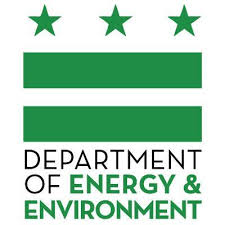Tree Rebate
Imagine someone handing you $50, or even $100 when you buy and plant a tree in your yard… Well, that’s what we’re doing at Casey Trees! Never before has adding a tree been so cost-effective — especially if you consider long term benefits such as lowered heating and utility bills.
How it Works
Just purchase and plant a tree on private property — residential or commercial — located in D.C. and complete and submit the Tree Rebate form below. Be sure to include a receipt for each tree you list and have it to us within one year of purchase. Please note there is a 25 tree limit for each property.
$50 Rebates
Any tree (with exceptions listed in the Fine Print) that will achieve a canopy spread of or under 40′ will be considered eligible for a $50 rebate. Below is a non-exhaustive list of trees to consider.
Species List
Accolade Elm
Allegheny Serviceberry
American Arborvitae
American Bladdernut
American Hazelnut
American Holly
American Hornbeam
American Smoketree
Amur Maackia
Apple
Apple Serviceberry
Apricot
Asian Pear
Atlantic White Cedar
Atlas Cedar
Bigleaf Magnolia
Black Locust
Blackgum
Blackhaw Viburnum
Blackjack oak
Brown Turkey Fig
Canada Red Chokeberry
Canadian Hemlock
Carolina Silverbell
Cherry Plum
Chinese Evergreen Oak
Chinese Fringetree
Chinese Pistachio
Chinese Tree Lilac
Chinquapin
Cockspur Hawthorne
Colorado Spruce
Columnar Goldenchain Tree
Common Witch Hazel
Corneliancherry Dogwood
Crabapple
Crapemyrtle
Cucumbertree Magnolia
Dawn Redwood
Deodar Cedar
Downy Serviceberry
Dwarf Pear
Dwarf Plum
Eastern Red Cedar
Eastern Redbud
English Holly
European Hornbeam
European Hornbeam Columnar
Fig
Flowering Crabapple
Flowering Dogwood
Formosa Sweet Gum
Foster Holly
Freeman Maple
Fringe Tree
Fuji Apple
Galaxy Magnolia
Gold Fig Tree
Golden Delicious
Goldenchain Tree
Green Hawthorne
Hardy Fiber Banana
Hazel Alder
Hedge Maple
Higan Cherry
Hophornbeam
Hoptree
Hybrid Arborvitae
Japanese Apricot
Japanese Arborvitae
Japanese Cedar
Japanese Maple
Japanese Snowbell
Japanese Stewartia
Japanese Tree Lilac
Kaki or Japanese Persimmon
Kousa Dogwood
Lacebark Elm
Leyland Cypress
Loblolly Pine
Nannyberry Viburnum
Nectarine
Nellie Stevens Holly
Norway spruce
Okame Cherry
Pagoda Dogwood
Paperbark Maple
Pawpaw
Peach
Persian Ironwood
Persimmon
Pignut Hickory
Pomegranate
Pond Cypress
Portugal Laurel
Posumhaw
Quince
Sassafras
Saucer Magnolia
Shadblow Serviceberry
Shantung Maple
Shortleaf Pine
Silverbell
Smoketree
Smooth Sumac
Sour Cherry
Sourwood
Southern Catalpa
Staghorn Sumac
Star Magnolia
Stellar Ink Hybrid Dogwood
Striped or Snakebark Maple
Sweetbay Magnolia
Trident Maple
Triumph Elm
Umbrella Magnolia
Virginia Pine
Washington Hawthorne
Western Red Cedar
White Fir
Wild Plum
Winged Sumac
Yaupon
Yoshino cherry
Yulan Magnolia
$100 Rebates
Any tree that will achieve a canopy spread over 40’ will be considered eligible for a $100 rebate.
Species List
American beech
American elm
American linden
American Sycamore
Bald Cypress
Bitternut or Swamp Hickory
Black Oak
Black Walnut
Black Willow
Boxelder
Bur Oak
Butternut
Chestnut Oak
Chinkapin Oak
Cottonwood
Ginkgo
Honey locust
Kentucky coffeetree
Live oak
Mockernut Hickory
Northern Catalpa
Nutmeg Hickory
Nuttall Oak
Osage Orange
Overcup Oak
Pecan
Pin Oak
Pitch Pine
Pond Pine
Post Oak
Red Horsechestnut
Red Maple
Red Oak
River Birch
Scarlet Oak
Shagbark Hickory
Shingle Oak
Shumard Oak
Silver Linden
Silver Maple
Southern magnolia
Southern Red Oak
Sugar Maple
Swamp Chestnut Oak
Swamp White Oak
Sweet Pignut Hickory
Sweetgum
Tuliptree
Tupelo Gum or Water Tupelo
Water Locust
Water Oak
White Oak
Willow Oak
Yellow Buckeye
Tree Rebate Form
Fine Print
While the vast majority of rebate requests are approved, your rebate request will be denied if you:
Request more than 25 tree rebates
The limit is 25 trees per property/applicant
Planted the tree in public space
Trees planted in the right-of-way — between the sidewalk and street — are considered a street tree. You can request a street tree at no cost through 311 online.
Went with a tree that will not reach 15’ tall and wide at maturity
Examples of previously denied requests included the following tree types.
Many varieties of crape myrtle such as ‘Tonto’ and ‘Comanche’; Japanese maple such as ‘Red Dragon’ and ‘Tamukeyama’, and Arborvitae such as ‘American Pillar’, ‘Emerald Green’, ‘Smaragd’ and ‘Green Splendor’.
Various ‘weeping’ trees such as Weeping redbud and Weeping cherry, and ‘columnar’ or ‘fastigiated’ trees that may get tall enough but not wide enough such as ‘Sky Pencil Holly’ and ‘Lombardy Poplar’.
Selected an invasive tree such as
Featured Invasives
Bradford pear (Pyrus calleryana ‘Bradford’)
Norway maple (Acer platanoides)
Princess tree (Paulownia tomentosa)
Tree of Heaven (Ailanthus altissima)
Additional Species
Silk tree, mimosa tree (Albizia julibrissin)
Paper mulberry (Broussonetia papyrifera)
Sawtooth oak (Quercus acutissima)
White mulberry (Morus alba)
Selected a species of Ash
Ash are under imminent threat from the Emerald Ash Borer and are likely to incur high mortality in the coming years.
Failed to include a purchase receipt for each tree
Submitted the form too late
Requests must be received by Casey Trees within one year of the purchase date.

The Tree Rebate program is made possible with funding from the Department of Energy and Environment.